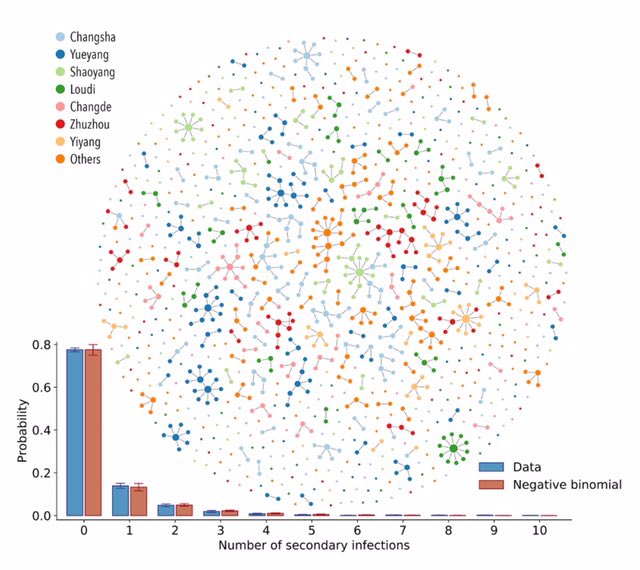
“The light at the end of this long, dark tunnel is growing brighter”, says @DrTedros at @who #covid19 presser. "There is now real hope that vaccines – in combination with other tried and tested public health measures – will help to end the #COVID19 pandemic.”
@DrTedros @WHO No vaccines have ever been developed this fast and the ”scientific community has set a new standard for vaccine development”, says @drtedros. "Now the international community must set a new standard for access."
@DrTedros @WHO "The urgency with which #covid19 vaccines have been developed must be matched by the same urgency to distribute them fairly”, says @drtedros. “There is now a real risk that the poorest and most vulnerable will be trampled in the stampede for vaccines."
@DrTedros @WHO To ensure mass procurement and delivery of vaccines as well as tests and treatments, the ACT-Accelerator needs $4.3 billion immediately and a further $23.8 billion next year, says @drtedros. “This isn’t charity, it’s the fastest and smartest way to end the #covid19 pandemic”.
@DrTedros @WHO "The real question is not whether the world can afford to share #covid19 vaccines and other tools”, says @DrTedros. “It’s whether it can afford not to."
@DrTedros @WHO Q about Oxford/AZ vaccine.
"I think we need to wait to see the results both on the efficacy and the safety”, says @doctorsoumya. "The AstraZeneca vaccine is also being currently trialed in many other countries, and eventually we should have data on about 60,000 patients or so."
"I think we need to wait to see the results both on the efficacy and the safety”, says @doctorsoumya. "The AstraZeneca vaccine is also being currently trialed in many other countries, and eventually we should have data on about 60,000 patients or so."
@DrTedros @WHO @doctorsoumya "Remember we have to cover a huge number of people, billions and billions of people”, says @doctorsoumya. “We will need all the manufacturing capacity in the world to be able to do that."
@DrTedros @WHO @doctorsoumya Advantage of vaccine is stability at 2-8 degrees, says @doctorsoumya. “That of course has huge logistical advantages for transporting and delivering this vaccine to cities and towns and villages and rural areas around the world, and we hope there will be more vaccines like that."
@DrTedros @WHO @doctorsoumya Q about Christmas.
There is a tradeoff says @DrMikeRyan between "a little bit more freedom over the Christmas period, which generates a sense of confidence and a sense of joy in the community, which people need right now” and allowing virus to spread more easily again.
There is a tradeoff says @DrMikeRyan between "a little bit more freedom over the Christmas period, which generates a sense of confidence and a sense of joy in the community, which people need right now” and allowing virus to spread more easily again.
"There is no safe or unsafe decision. There is only higher and lower risk of the situation getting better or worse, depending on what you do", says @DrMikeRyan.
“The science is clear, the policy is not clear.”
“The science is clear, the policy is not clear.”
@DrMikeRyan Q about mission to investigate #covid19 origin.
“The international team has been brought together”, says @DrMikeRyan. Names have been communicated to member states and will be publicly released. Thanks the team for allowing WHO to release their names. “That’s not an easy choice.”
“The international team has been brought together”, says @DrMikeRyan. Names have been communicated to member states and will be publicly released. Thanks the team for allowing WHO to release their names. “That’s not an easy choice.”
@DrMikeRyan “We’ve all received our fair share of hate mail and threats”, says @DrMikeRyan. “There has been a level of attack and abuse to people involved in international science. It is not an easy space to be in right now, let me be clear about that."
@DrMikeRyan “It takes courage to be a scientist”, says @DrMikeRyan "I used to think it only took brains, but now you need to be brave and courageous as well to do science in the face of the anti-science movements that we see and the ideologic politics that has come into this process."
@DrMikeRyan Origins mission has a phase 1 with short term studies to understand how the virus started circulating in Wuhan and then longer-term studies in phase 2 building on this, explains @mvankerkhove. (Terms of reference are here: who.int/publications/m…)
@DrMikeRyan @mvankerkhove "The international team will travel to China”, says @mvankerkhove. "That is being discussed amongst the international team and the Chinese counterparts. And that will be arranged in due time."
• • •
Missing some Tweet in this thread? You can try to
force a refresh






